The history of the Louvre through time: a visit at the heart of the famous museum
- July 29, 2021
- culture, news, team building, tourism
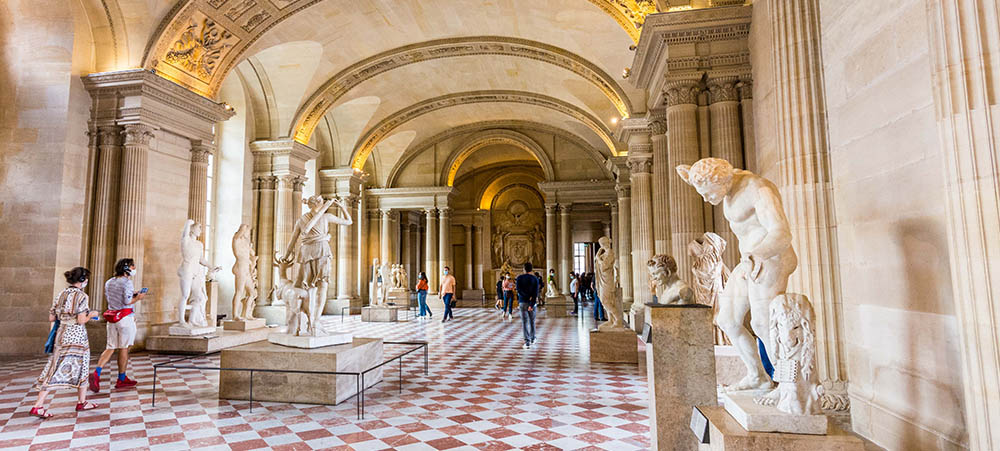
The Louvre isn’t just the largest museum in the world. The building proves to be as interesting and sumptuous as the 35,000 artworks it accommodates. We invite you to discover the history of the Louvre, an ancient palace moulded by our sovereigns throughout centuries, in an original manner. The great kings of France will each present to you a hall or place that they designed or modified.
You can read this article at your home, or you can print it and visit the museum in person along with our scavenger hunt at the Louvre museum. For each paragraph, go to the place indicated in the title!
1202 – The fortress – Sully Wing, the moats of the medieval louvre, level -1
I wish you a good day! I, Philip Augustus, king of France from 1180 to 1223, I am behind the construction of the Louvre. As you know, I surrounded Paris with a fortifying wall. In the ”Outre-grand pont” district (which I believe is now called “Rive droite”), I edified a powerful fortress along the extension of my wall and on the river banks. And so the Louvre was born. From the moats, you can admire the foundations of its towers and curtain walls.
But why close off Paris like that? For heaven’s sake! Before my conquest of Normandy in 1204, that duchy was in the hands of the English crown! This important fief dangerously bordered the west of my kingdom, so much that I went on a crusade. The vessels of the dangerous English could sail up the Seine and attack my dear city of Paris. This stronghold located downstream of the city protected it from eventual invasions.
» READ ABOUT – Virtual Louvre team building, discover the largest museum in the world
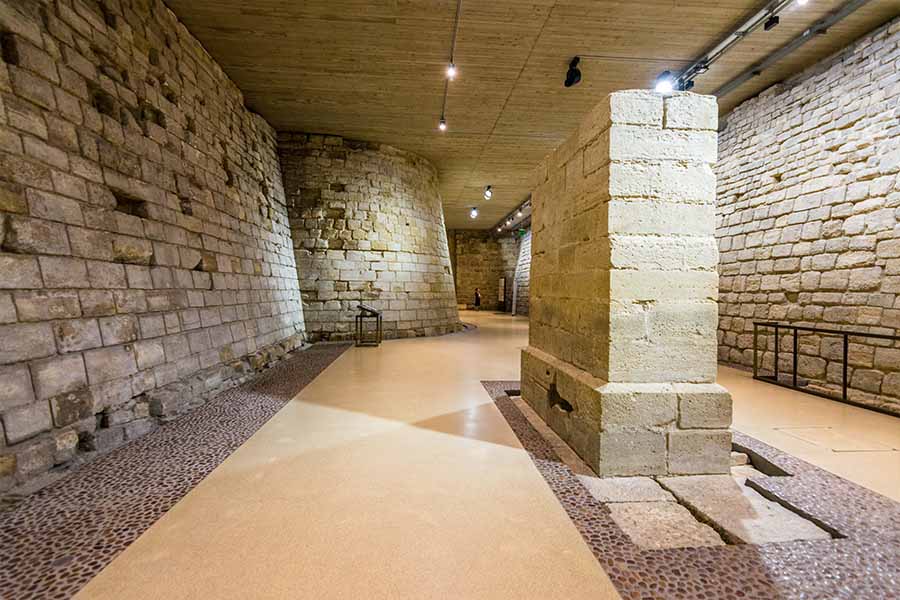
1371 – The royal residence – Sully Wing, the Louvre’s medieval dungeon, level -1
Listen! I am Charles V the Wise, king of France from 1364 to 1380. In the last century, the city of Paris extended well beyond the fortifications of Philip Augustus, at least for the Rive droite. I built a new wall to the north of the Seine in order to defend these new districts. The Louvre, now integrating the urban fabric, did no longer fulfill its defensive role.
I decided to convert this fortress into a royal residence (one amongst many!). From 1360 to 1371, my architect Raymond du Temple transformed the ancient fortress into a dwelling that was as pleasurable as it was sumptuous. Large windows replaced the narrow arrow slits. Chimneys, spiralled staircases and refined decorations flourished. One of the towers hosted the first royal library. Between the dungeon and the staircase you’ll find an interactive screen presenting the Louvre’s metamorphoses through time. You’ll discover my son’s helm, the future Charles VI, near a miniature model, and after that a hall that my predecessor Saint-Louis conceived.
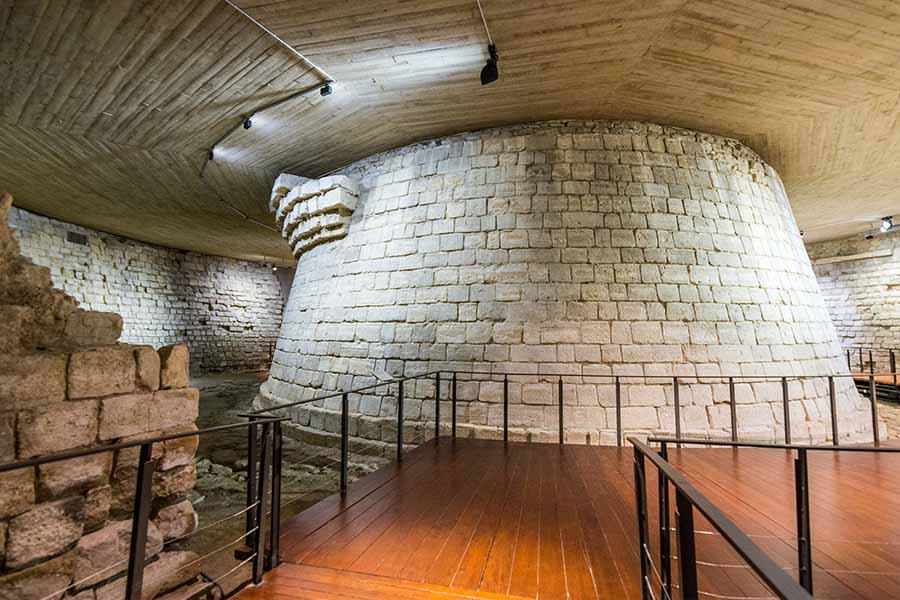
1549 – The Louvre in the Renaissance – Sully Wing, the Caryatids hall, ground floor
I, Henry II, salute you! Have you never heard of me? Good Lord! I am however the son of the famous Francis I! In the year of our Lord 1528, my royal father travelled to Paris. He found the Louvre in a sad state of deterioration following the tragic Hundred Years’ War. Some time before his death, Francis I charged the renowned architect Pierre Lescot with rebuilding the Louvre with an antique style imported from Italy, which was very popular in the 16th century.
After my father’s death, the works to renovate and modernise the palace continued during my reign. I’m so proud to present to you this magnificent ballroom achieved in 1549! Know that its name comes from the Caryatids, these statues and columns supporting the musicians’ balcony which are copies of ancient models on the Acropolis in Athens!
My dear architect Pierre Lescot and the no-less talented sculptor Jean Goujon endowed the Louvre with so many other wonders! Exit the hall by the door under the Caryatids. If you go to the right and climb the stairs, you’ll discover the marvelous vault of the steps leading to my private apartments. Return to the Caryatids hall since I wish to ask you a riddle. Carefully observe the sculpted decorations in this space. Can you find the H of my name Henry II?
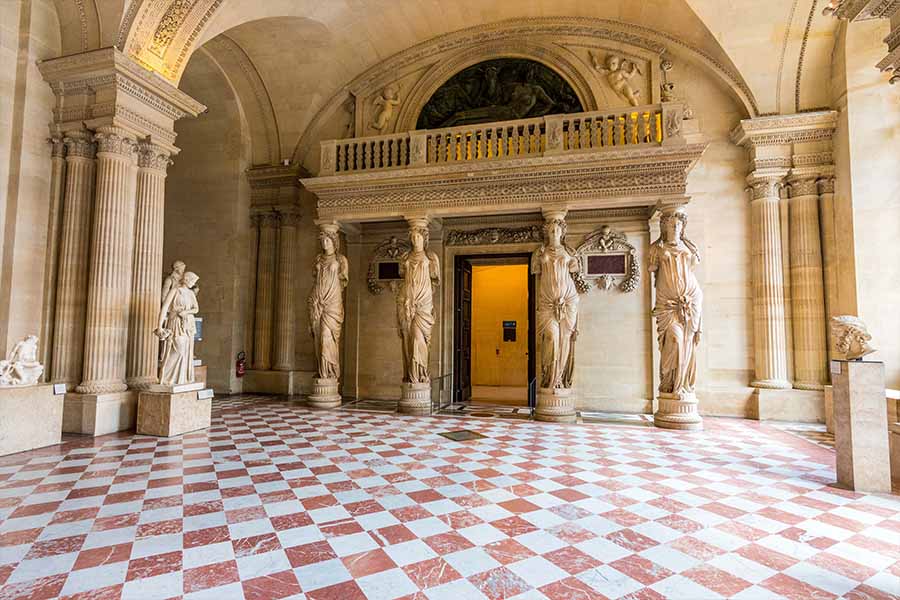
1610 – Henry IV and the Grand Design – Denon Wing, Grande Gallery, floor 1
Well hello! I am Henry IV! My name is associated with so many images of Epinal! A white panache, a Parisian mass, a boiled chicken… But did you know that I also helped embellish the Louvre?
In 1564, the construction of the Tuileries Palace began following the will of Catherine de’ Medici, the widow of Henry II. When I became ruler of France in 1589, I had a grand design in mind: to connect the Louvre with this new royal residence by edifying symmetrical pavilions. One of the project’s outcomes is the Grande Galerie, which you’re visiting today. Assassinated in 1610, I was alas not able to complete all my plans.
Begad! Whatever! At least there are so many beautiful works adorning these walls now! Don’t forget that you can discover these marvels during the Booster2Success team building scavenger hunt at the Louvre! I, Henry IV, blindly recommend this amazing journey!
» ALSO DISCOVER – An original and fun team building activity in the Covered Passages
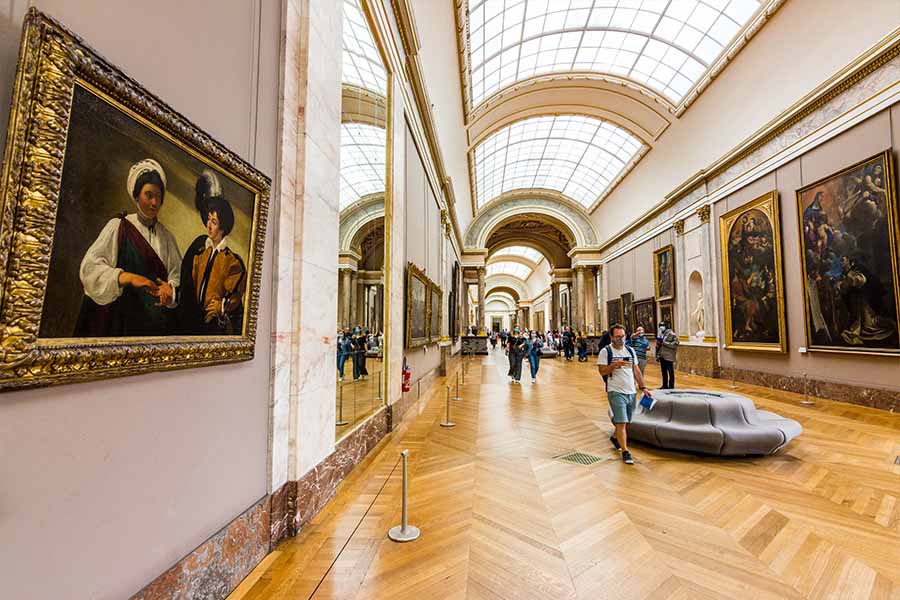
1663 – The history of the Louvre under the Sun King – Denon Wing, the Galerie d’Apollon, floor 1
I, Louis the fourteenth, king by the grace of God, wish you a good day. Before definitely moving to Versailles in 1682, I often dwelled at the Louvre. I continued the works undertaken by my predecessors. Allow me to present to you the marvellous Galerie d’Apollon. It was built between 1661 and 1679 by the famous Louis le Vau, an architect from Vaux-le-Vicomte.
Look up to contemplate the gold and the paintings of triumphs decorating the gallery’s ceiling. Admire the stuccos representing the Muses and captives from every continent, then observe the rigorously organised succession of windows. You can already notice the characteristics of my style. Abundant and majestuous decorative elements are mixed with the architectural riguor inspired from the classical Antiquity. By comparing the Galerie d’Apollon to the Hall of Mirrors, you’ll notice that the constructions at the Louvre served as a model for those of Versailles.
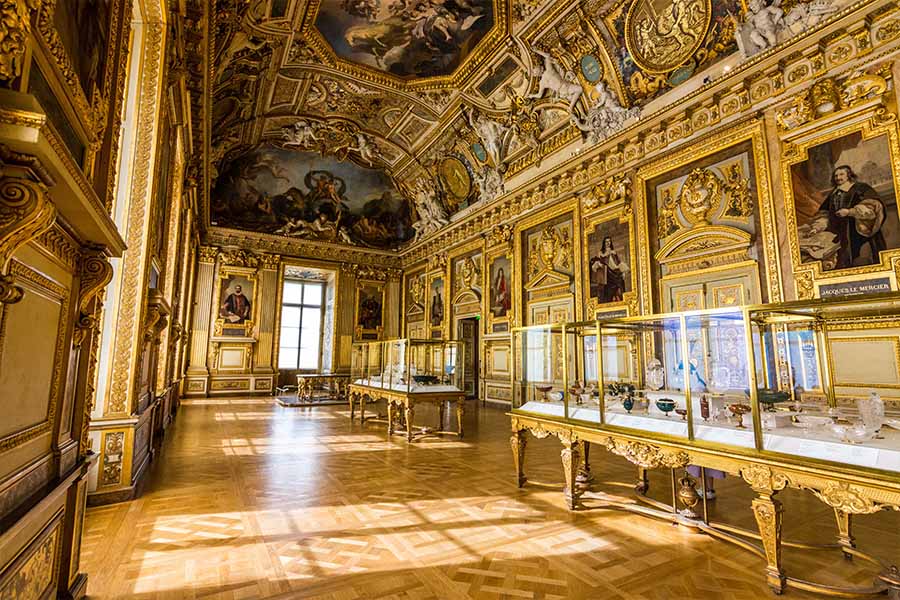
1857 – The history of the Louvre under Napoleon III – Richelieu Wing, the Napoleon III Apartments, floor 1
Hello! I, Napoleon III, emperor of the French, also left my mark in the Louvre’s history. Abandoned by the 18th century kings to the profit of Versailles, the Louvre became a museum in 1793 (whose original artworks you can discover thanks to this article). My uncle Napoleon I resumed the Grand Design project of connecting the Louvre to the Tuileries Palace. True, since Henry IV these two palaces were linked through a great hall, but a symmetric wing was missing. Napoleon began the necessary works but was unable to complete them.
It was me, his nephew, who achieved this four-hundred-year-old project. Finally! The two palaces were linked by a new wing in 1861… ten years before the Tuileries burned down… Whatever! You can now wander in the rich apartments of my time. They were characterised by their lavishness, the abundance of decorations, the gildings and eclecticism. That is, a blend of previous styles. This fits the Louvre perfectly: a place where styles of different periods cross each other, with each sovereign leaving an architectural mark of their era. The Louvre embodies the history of France’s architecture…
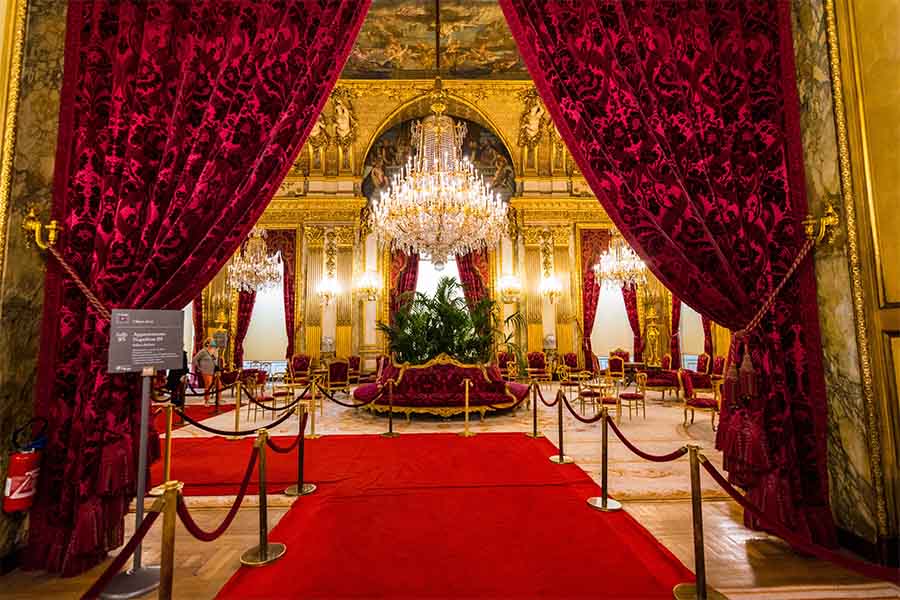
Some of our presidents wish to leave their print at the Louvre, just as many of our kings and emperors. True, we are thinking of Mitterrand and the pyramid. But, did you know that Charles de Gaulle wanted to rebuild the Tuileries Palace in order for it to become his residence instead of the Elysée? Palace or museum, the establishment is before anything a national symbol.
Photo credit: Booster2Success
Booster2Success proposes unique team building scavenger hunts in all of Paris.
CONTACT US to organize an event in Paris.
